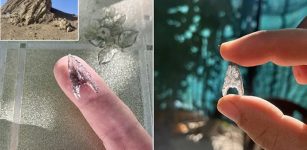Immense Ancient Copper Mine Used By Romans Unearthed In Spain
AncientPages.com - During excavations in the ancient city of Munigua in southern Spain, archaeologists have unearthed an immense copper mining operation built on an older older mine and dated back thousands of years ago.
The Turdetani were original inhabitants of Munigua and they began the ore exploitation more than 4,000 years ago. The Munigua mine supplied the Roman Empire with vast amounts of iron and copper until the late second century CE, when all the mines in Hispania were shut down, reports Haaretz.
Recent discoveries in Munigua include an elaborate system of ventilated underground galleries connected by tunnels and openings through mine strata used for ventilation and connecting the surface with underground works, dated to the Roman era.
Greek ceramics dating to the fourth century BC are the earliest evidence of a settlement at Munigua. When the Romans conquered the city primarily for its mines, Munigua was already a major center.
In earlier excavations, which have conducted since 1956, archaeologists have discovered temples, sanctuaries, a forum, thermal baths, a two-story hall, city walls and a large necropolis.
The presence of valuable metals was a motivating factor in Rome’s decision to invade other cities and countries, including those as far away as Israel where copper production was massively increased during the Roman occupation.
The Romans didn’t introduce mining in Spain either, they simply exploited the existing mines which were already being used.
To expand his empire, Hamilcar Barca of Carthage, a Punic general, established New Carthage on the southeast coast of Spain during the second half of the third century BCE, when he also took control of the Munigua mines, which refilled Carthage’s coffers within just a few years.

A Roman altar dedicated to Mercury stands in the entrance street to the Forum in Munigua, Spain. Image: Íñigo López de Audícana
In 218 BCE the Romans, in an attempt to interrupt Carthage’s supply of metal, conquered New Carthage. The Romans did more than mine in Munigua, archeologists have also discovered a tetrastyle temple which was likely dedicated to Jupiter, in addition to a temple of Mercury unearthed in the same area, as well as a two-story porticus and a nymphaeum (a monument dedicated to the nymphs, which were usually found in public bathhouses).
“We know that metal production enormously increased partly from vast slag deposits in Munigua, some the size of football fields. This has much to do with our knowledge of their mining operations.” Thomas G. Schattner with the German Archaeological Institute, who led the excavations, says in an article published by Haaretz.
AncientPages.com






















